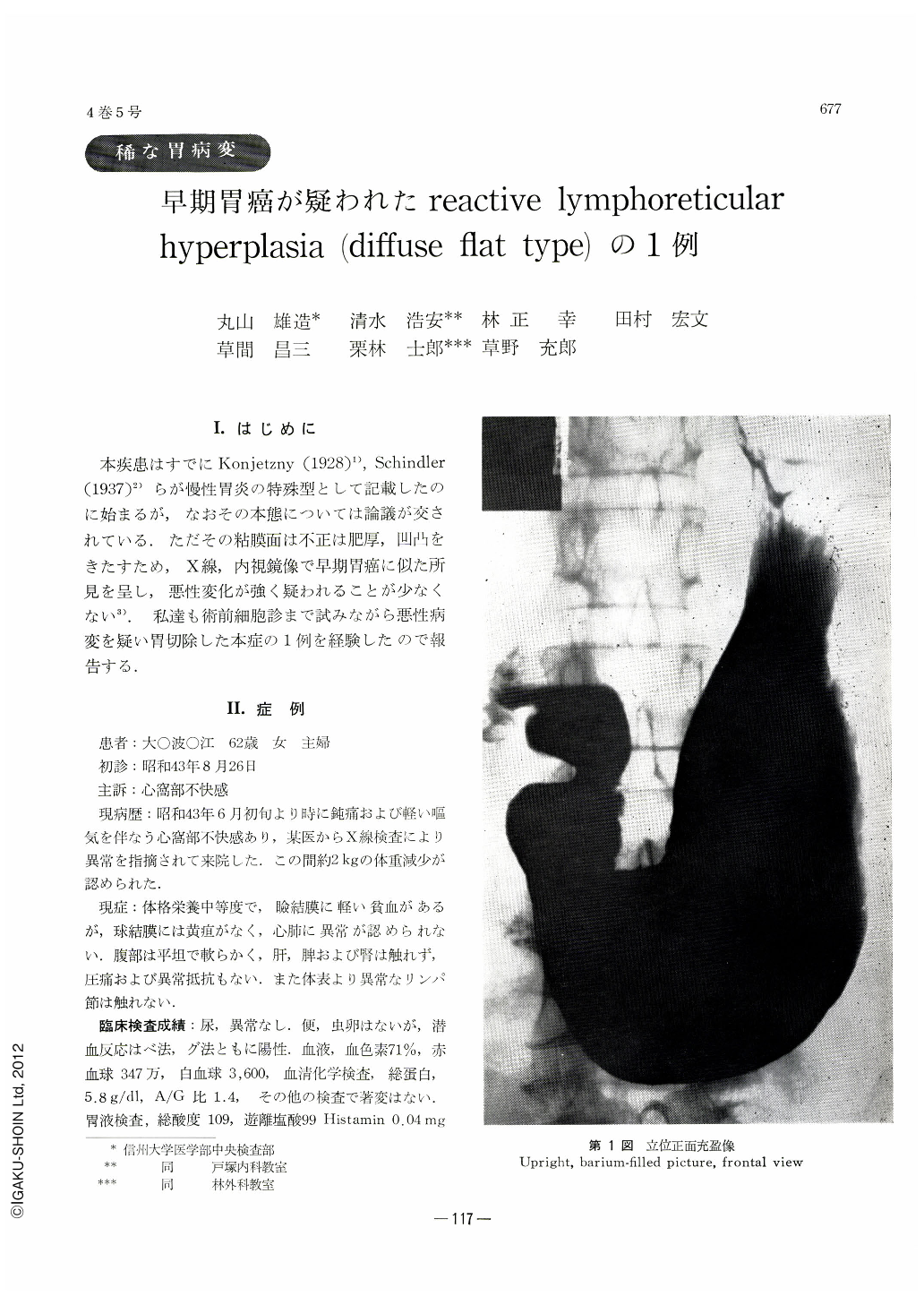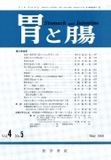Japanese
English
- 有料閲覧
- Abstract 文献概要
- 1ページ目 Look Inside
Ⅰ.はじめに
本疾患はすでにKonjetzny(1928)1),Schindler(1937)2)らが慢性胃炎の特殊型として記載したのに始まるが,なおその本態については論議が交されている.ただその粘膜面は不正は肥厚,凹凸をきたすため,X線,内視鏡像で早期胃癌に似た所見を呈し,悪性変化が強く疑われることが少なくない3).私達も術前細胞診まで試みながら悪性病変を疑い胃切除した本症の1例を経験したので報告する.
A 62-year-old woman was admitted to Shinshu University Hospital complaining since two months ago of epigastric discomfort associated with occasional pain, nausea and loss of weight. She was slightly anemic and the gastric juice showed hyperacidity. At x-ray examination of the stomach, marked defomity of the gastric angle as of box-shape was observed in addition to rigidity and limited distensibility of the wall in a relatively wide area on both curvatures including the incisura. Double contrast images with moderate amount of air disclosed a small niche at the angle and lobulated mucosal patterns of irregular roughness extending from the angle down to the antrum. Gastroscopic study revealed many erosive lesions scattered about on the swollen mucosa of the anterior wall at the level of the incisura. Broad mucosal folds radiating from the angle were clearly observed as was already noticed at examination. Cytologic study of washing smear of the mucosa by GFC showed grade Ⅲ in Papanicolaou's classification.
From these findings erosive gastritis was naturally suspected, but eventually gastrectomy was performed not only because early gastric cancer (Type Ⅱc of Japanese Society of Endoscopy) could not be excluded after all but also because atypically swollen, opaque mucosal patterns accompanied by multiple erosions made it impossible to rule out other varieties of early gastric cancer despite the fact that no malignant changes were observed by the biosy during the operation.
The resected lesions, extending from the antrum up to the posterior wall at the height of the angle, was histologically diagnosed as reactive lymphoreticular hyperplasia (diffuse flat type). The greater curvature as well as the corpus was partly involved in this change. No ulcerative lesion was seen except small hemorrhagic erosions.
Some comments are made on the clinical aspects of reactive lymphereticular hyperplasia from the standpoint of histology with reference to its evolution. The authors are of opinion that it should be considered as an clinical entity until disproven so that it might be correlated with other similar lesions of the stomach and be properly evaluated.

Copyright © 1969, Igaku-Shoin Ltd. All rights reserved.


